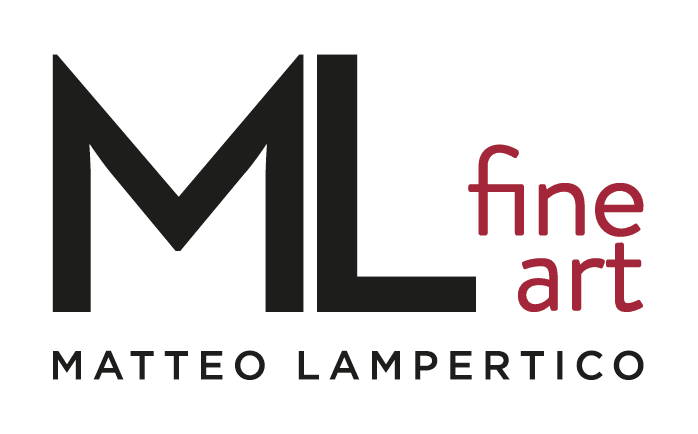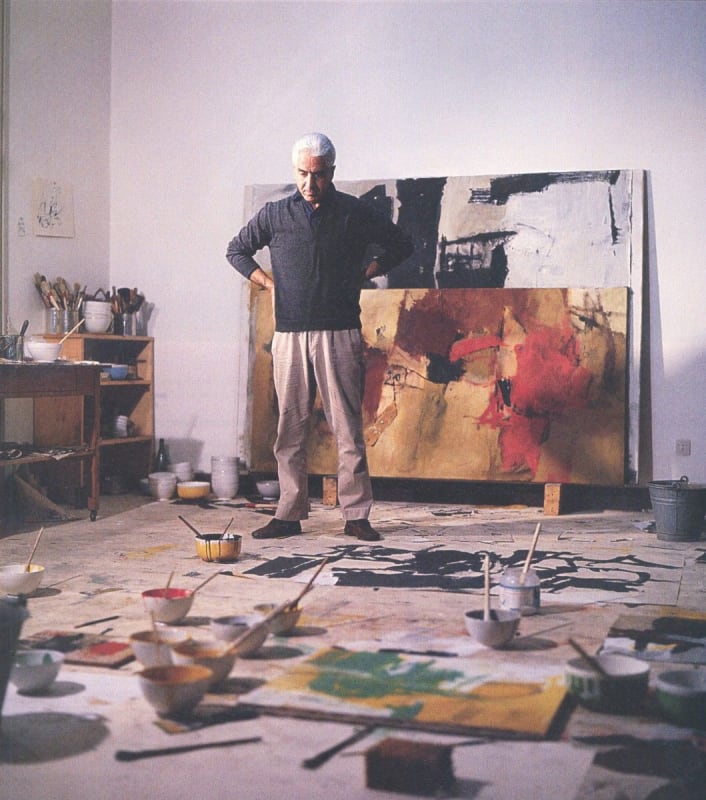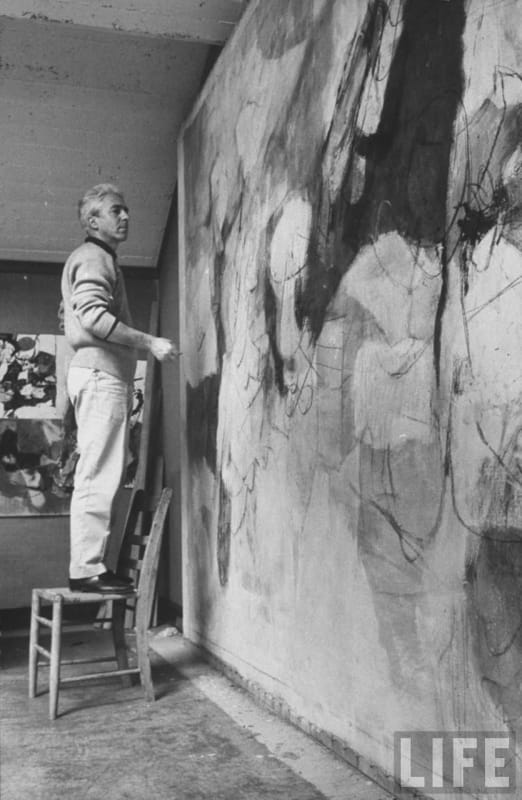Afro Italian, 1912-1976
Afro Libio Basaldella (March 4, 1912 – July 24, 1976) was an Italian painter and educator in the post-World War II period. He began as a member of the Scuola Romana, and worked together with Alberto Burri and Lucio Fontana. He was generally known by the single name, "Afro."
Afro Libio Basaldella (known as Afro) was born on March 4, 1912, in Udine, Italy. His siblings shared his interest in art; he devoted himself to painting while his older brothers Dino and Mirko became sculptors. Afro studied in Florence and Venice, and in 1932 his first solo exhibition was held at Galleria del Milione, Milan. In 1933 Afro started working in a figurative style rich in symbolic accents and pale and ethereal tones, akin to that of the Scuola Romana (Roman School), with which he was temporarily affiliated. Afro moved to Rome in 1938, but served in the Italian army (and participated in the anti-Fascist Resistance) during World War II. He also taught mosaic design at the Accademia di belle arti, Venice, and his work took a new slant, as figuration gradually gave way to a growing interest in Cubism.
Returning to Rome in 1945, Afro encountered tensions between proponents of abstraction and those who favored realism, but he was only marginally involved in these controversies. By the end of the decade he had developed a strand of abstraction based on intersecting geometric planes and expressive juxtapositions of color and light. Increasingly weary of the polemics among painters in Italy, Afro turned his attention to the American scene. In 1950 he traveled to New York for the opening of a group show of Italian artists at the Catherine Viviano Gallery, a venue that hosted his first U.S. solo exhibition later that year and regular exhibitions of his work through 1968.
From 1952 Afro's painting took a new direction, adding fluid signs, rounded contours, and a brighter palette and replacing the angular forms and quasi-monochromatic pictorial language of earlier years. That same year he joined the Gruppo degli Otto Pittori Italiani (Group of eight Italian painters, 1952–54), whose "abstract-concrete" leanings represented an alternative to the Italian abstraction-realism polarization. The group exhibited together at the 1952 Venice Biennale, but by 1954 Afro had distanced himself from the Otto—a move that coincided with the introduction of an increasingly dynamic gesture in his works. More dramatic and spontaneous, Afro's late 1950s works testify to his growing interest in Abstract Expressionism, amplified by his friendship with Willem de Kooning, who stayed in Afro's studio in Rome in 1959, and Afro's frequent visits to the United States. James Johnson Sweeney, art critic and former director of the Guggenheim Museum, authored an early monograph on Afro in 1961. Afro's paintings of the 1960s were increasingly gestural, a tendency that he reversed at the end of the decade when his works became more synthetic and geometric.
Afro participated in international exhibitions, including the Venice Biennale (1952, 1956, 1960); Documenta, Kassel, West Germany (1955, 1959); and The New Decade: 22 European Painters and Sculptors, Museum of Modern Art, New York (1955). He completed a large-scale mural for the UNESCO headquarters in Paris (1958) and had solo shows at the Massachusetts Institute of Technology, Cambridge (1960), and Galerie de France, Paris (1961), as well as a retrospective at Kunsthalle Darmstadt, West Germany (1969). His awards include a prize for best Italian painter at the Venice Biennale (1956) and a Guggenheim International Award (1960). In 1958 the artist completed a large-scale mural for the UNESCO headquarters in Paris.
Afro died on July 24, 1976, in Zurich.
-

Arte in Nuvola 2024
BOOTH B30 - C29 21 - 24 Nov 2024ML Fine Art is pleased to announce its participation to Arte in Nuvola 2024, that will take place in Rome from 21 to 24 November....Read more -

TEFAF Maastricht 2024
7 - 14 Mar 2024We are looking forward to seeing you at TEFAF Maastricht 2024! On this occasion our booth will showcase a selection of historically relevant paintings, sculptures...Read more



